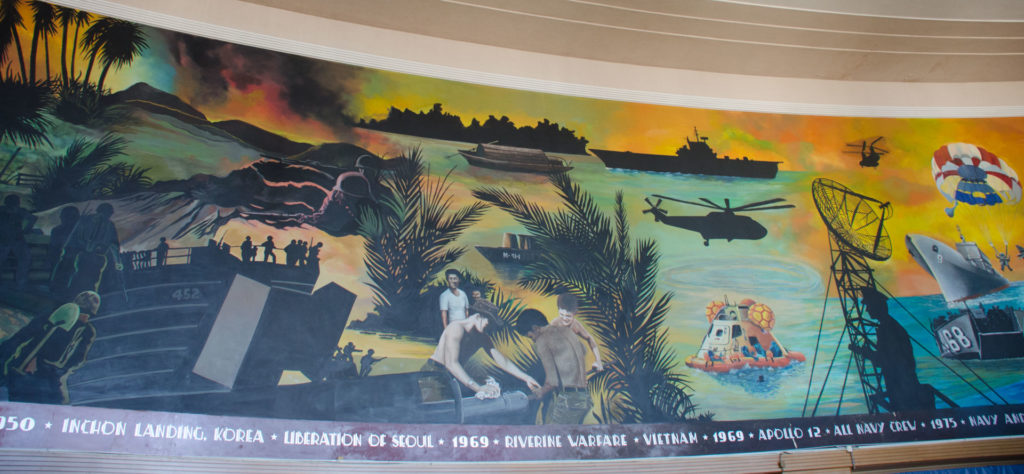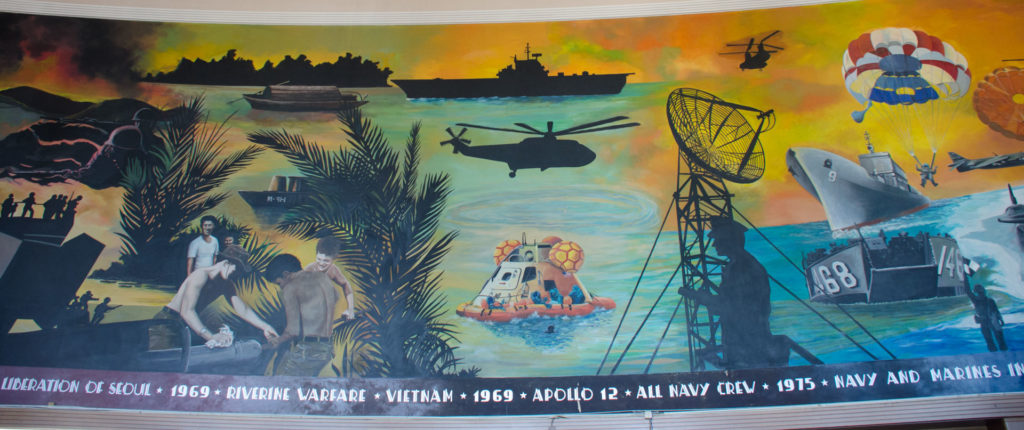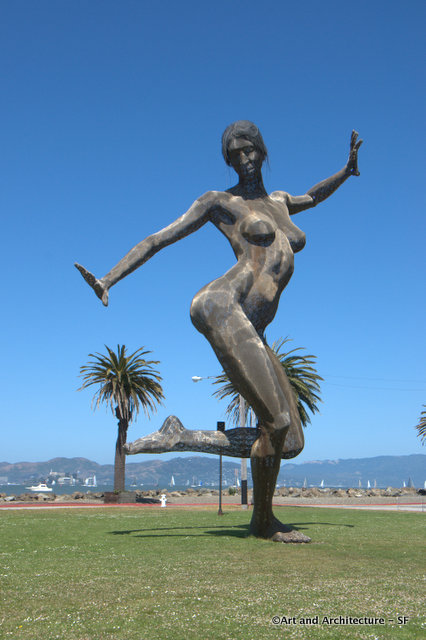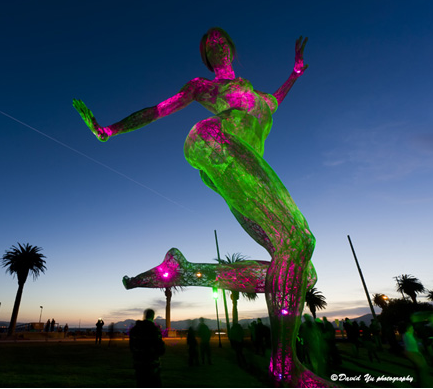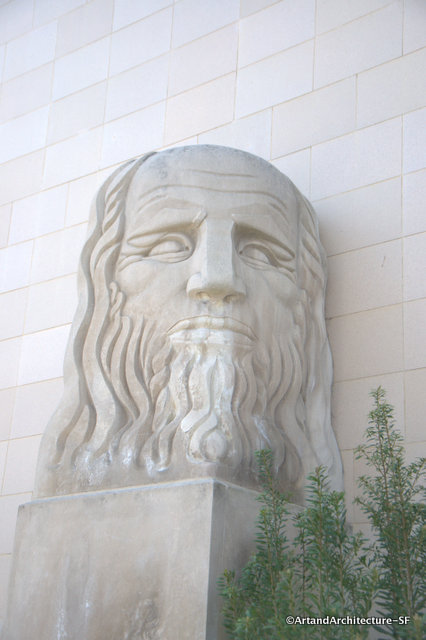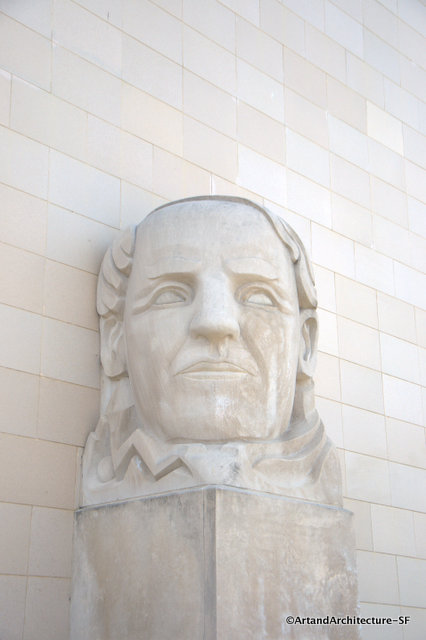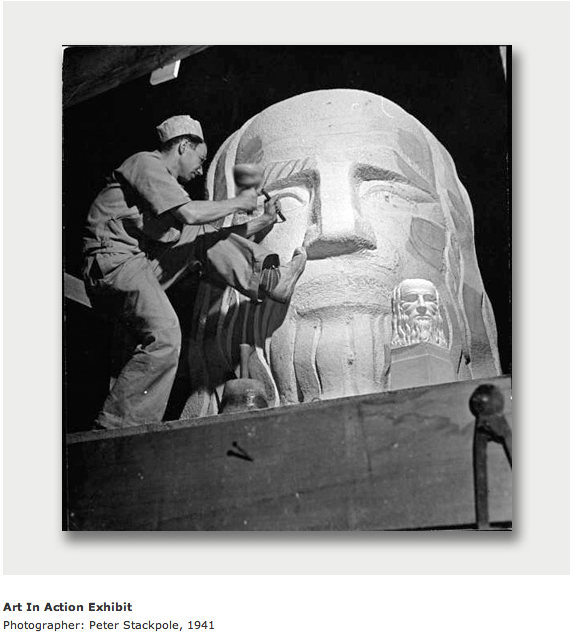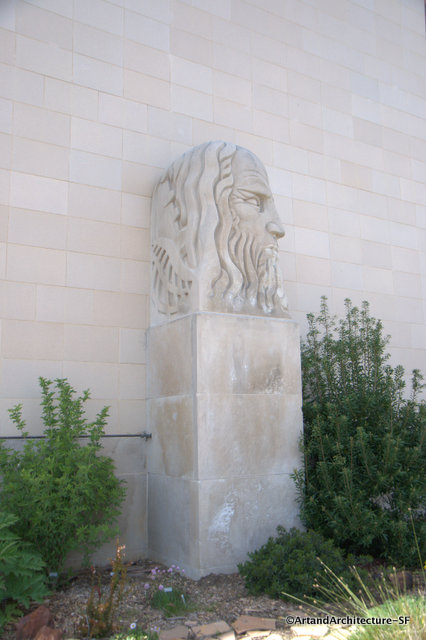Treasure Island Museum
Former Administration Building
Treasure Island
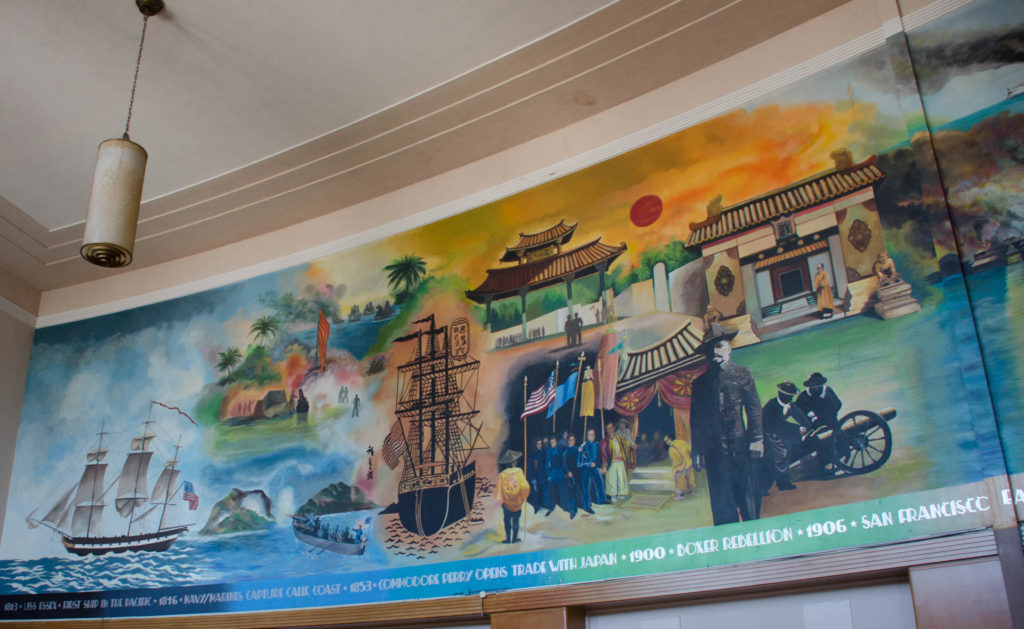
This mural resides in what was originally called the Navy Museum inside the GGIE’s Administration Building. The museum opened October 3, 1975 with exhibits representing the Navy and Marine Corps from the early 1800’s to the present.
Eventually the collection grew to include the Coast Gaurd and then the Golden Gate International Exhibition, the Bay Bridge, which runs through the island, and the island itself. Once the museum began covering far more than the Naval history the name was changed to the Treasure Island Museum.
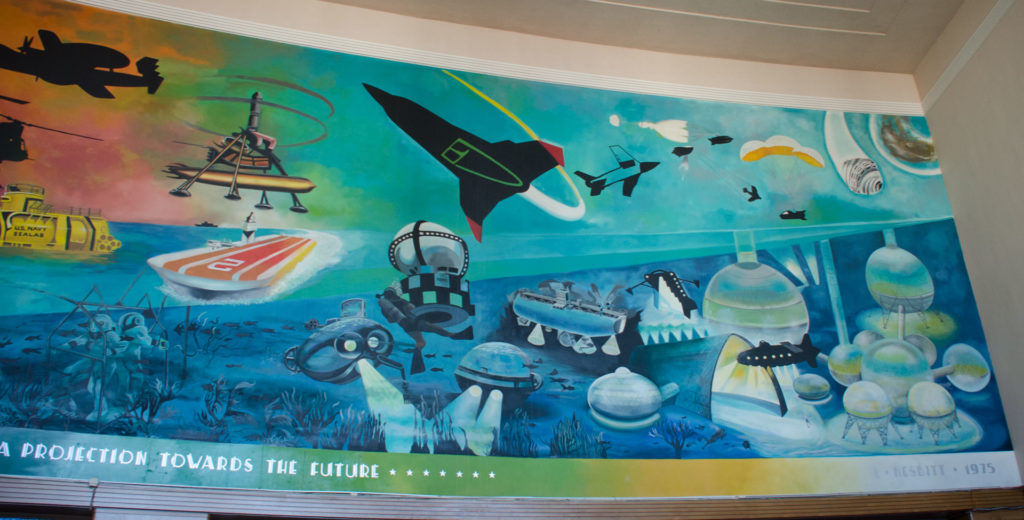 The museum resides in a 1938 moderne style building designed by William Peyton Day and George William Kelham. It has also been known as Building 1, as Command Naval Base San Francisco Headquarters, as Naval Station Treasure Island and was once used as a terminal and ticket office for Pan American Airlines. It was listed on the National Register of Historic Places in 2008.
The museum resides in a 1938 moderne style building designed by William Peyton Day and George William Kelham. It has also been known as Building 1, as Command Naval Base San Francisco Headquarters, as Naval Station Treasure Island and was once used as a terminal and ticket office for Pan American Airlines. It was listed on the National Register of Historic Places in 2008.
The museum closed in 1997 when the Navy began to close down their base on the island and viewing the mural is limited. Dates and times can be found on the TI website schedule.
This mural, by Lowell Nesbitt, is 251 feet long and 26 feet high and was commissioned for the opening of the museum. You will find scenes showing the history of the Navy and Marine Corps in the Pacific since 1813.
Lowell Blair Nesbitt (October 4, 1933 – July 8, 1993) was a painter, draughtsman, printmaker and sculptor.
Nesbitt was a graduate of the Tyler School of Art at Temple University in Philadelphia, Pennsylvania, and also attended the Royal Academy of Arts in London, England, where he created a number of works in the mediums of stained glass and etching.
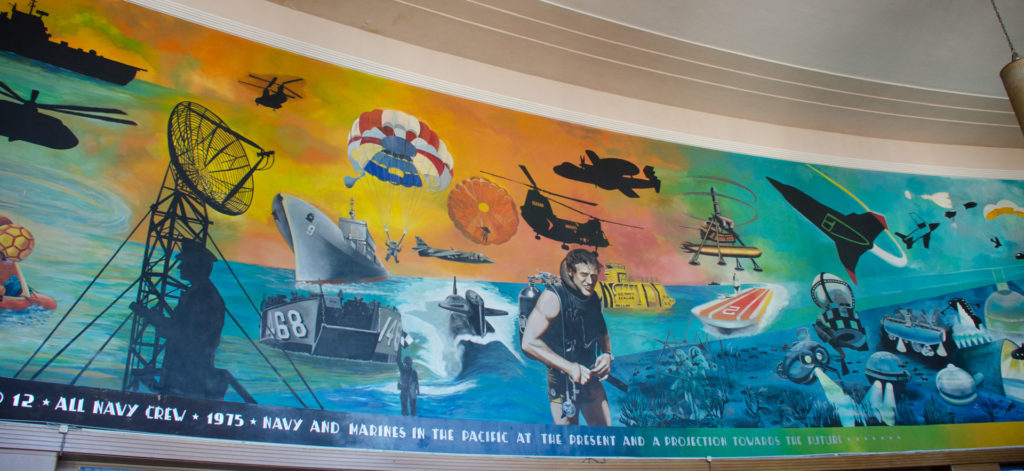
*
